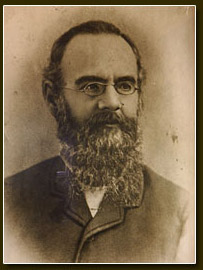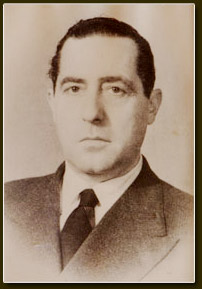

Tito Costanti

Emilio Costanti
|
YESTERDAY
COSTANTI'S HISTORICAL BACKGROUND
The Costantis are an old Sienese family dating back to the fifteenth century. They appear in the history of Montalcino as being involved in major event which led to the creation of the Republic of Siena on Ilcinese land in 1555. In fact on the 21st of April of that year the 242 Sienese noble families together with the remaining 435 families feeling anxious about the Florentine Guelf encroachment turned to Montalcino to protect their independence. The earliest evidence of the Sienese Costantis is a coat of arms belonging to Giovanni jurist and eminent chancellor of the university in 1506 (the coat of arms is still kept in the Rettorato Palace). Scipione Costanti is known for his heroism in defending the town of Montalcino. His son, Marco Antonio, born in June 1549, spent his first years during the tragic events accompanying the capitulation of the Sienese Republic in Montalcino. In his “commentaries”, the French military commander Blaise de Montluc, allied with the Sienese, writes about his daily habit of rubbing his pale and emaciated face with Montalcino wine, already known for his strong composition and deep colour, in order to reassure the people about his state oh health which in reality had suffered through deprivation during the sieges. In 1559 Panfilo dell’Oca gave the keys of the town to the Florentines and the Spanish. This signalled the end of the Republic, but the Costantis decided to stay in Montalcino, where they came into possession of vast landholdings. From that time on the history of Costanti family merges with that of Ilcinese people and their wine-making.
The only exception were the brothers Crescenzio and Carlo Costanti, who in 1711 in the service of the Venetian Republic , were rewarded for their courage in the fighting eleven land battles and six battles by being given the title of “Counts with hereditary rights”. The following generations of the Costantis family in were no longer warlike but were now renowned for their successful “battles” in the agricultural field. They were dedicated to the cultivation of the vast lands that they had obtained from concession and acquisition through advantageous local marriages. Their land originated at the Colle al Matrichese and stretched from there to Bibbiano castle and beyond to Sovignano, a few kilometres from Siena. A second Crescenzio Costanti, a dedicated and esteemed wine grower, used to go on frequent trips to France to find out about new oenological techniques (his discoveries exist today, conserved in the Colle al Matrichese). Towards the end of 1700, he discovered some Etruscan remains while digging a new vineyard on an impervious and rocky hillside (where he said the best wines was to be grown). This was to be an important find for Montalcino archaeology (the episode is reported by Tullio Canali in 1700 in “Historical information on the town of Montalcino). However, a more interesting thing today, is that in the “archaeology” of Montalcino Brunello, a wine that is over one hundred years old, the name Tito Costanti is a the forefront. He was both a count and a lawyer - involved in liberal professions, as was the custom in his day. Tito and the other Montalcino producers were the first people to call Montalcino wines by the name “Brunello”. Tito presented a wine of this name at the wine Exhibition of the Province of Siena in August 1870 a wine produced in 1865 wine harvest with an alcoholic gradation of 14 degrees. It is surprising that in Tito Costanti’s oenological creations, the content already existed that is demanded now in both Brunello and Rosso di Montalcino wines. At this exhibition Tito presented one wine that was five years old, called Brunello, and another wine, produced in 1869 which he also called Brunello, believing it to be still worthy of this name, even if it was only one year old. The dedication of Brunello, characteristic of the Costanti family, is passed down to Emilio, both a doctor and a wine grower, to whom is owed the greater commercialisation of the Colle al Matrichese wine. Until the early sixties this wine was known to be practically impossible to find, apart from in close-knit and carefully chosen circles of friends and the odd foreigner who loved the most recherché crus. From then on, the Costanti Brunello which up until then had been almost exclusively found at Rotary Club dinners in Pescara , where Emilio was president, slowly became more known in Italy and the rest of the world. Its commercial success was instant, ad the requests were already far outnumbering the small amount of bottles produced. Emilio Costanti had revived an perfected the old family labels, and the image of and historic Montalcino Brunello Cantina was consolidated.
|




